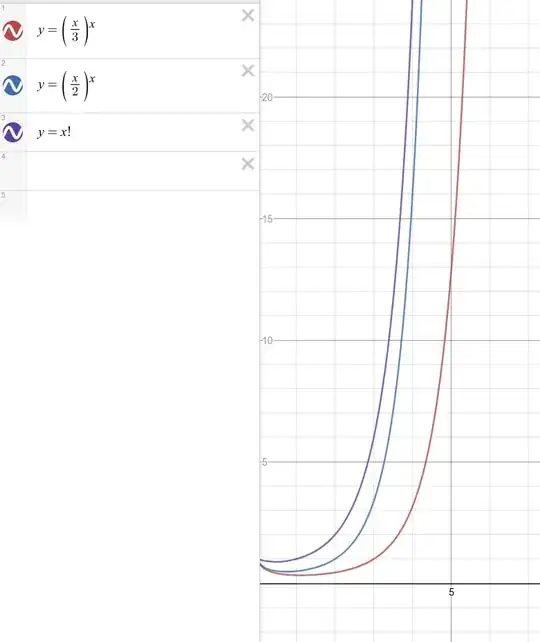Let us show that $a_n=\left(1+\frac{1}{n}\right)^n$ for $n\geq 1$ gives an increasing sequence bounded by $3$.
Increasing. The product of $k$ positive numbers can always be written as the $k$-th power of their geometric mean. In particular
$$ 1\cdot\left(1+\frac{1}{n}\right)^n = \text{GM}\big(1,\underbrace{1+\tfrac{1}{n}}_{n\text{ times}}\big)^{n+1}\color{red}{<}\text{AM}\big(1,\underbrace{1+\tfrac{1}{n}}_{n\text{ times}}\big)^{n+1}=\left[\frac{1+n\left(1+\tfrac{1}{n}\right)}{n+1}\right]^{n+1} $$
by the AM-GM inequality. If we expand the RHS, we exactly get $a_n<a_{n+1}$.
Bounded by $3$. By the binomial theorem and the fact that $\binom{n}{k}\leq\frac{n^k}{k!}$ we have:
$$ \left(1+\frac{1}{n}\right)^n = 1+\sum_{k=1}^{n}\binom{n}{k}\frac{1}{n^k}\leq 1+\sum_{k=1}^{n}\frac{1}{k!} $$
for any $n\geq 1$, hence $a_n$ is bounded by $1+\sum_{k\geq 1}\frac{1}{k!}$.
On the other hand, for any $k\geq 3$ we have $k!\geq 2\cdot 3^{k-2}$, hence
$$ a_n \leq 1+1+\frac{1}{2}+\sum_{k\geq 3}\frac{1}{2\cdot 3^{k-2}}=\frac{11}{4}\color{red}{<3}. $$
Since any increasing and bounded sequence is convergent to its supremum, this shows that
$$ \lim_{n\to +\infty}\left(1+\frac{1}{n}\right)^n $$
is a mathematical constant less than three, and with few efforts you may also prove that such mathematical constant is exactly
$$ \sum_{k\geq 0}\frac{1}{k!} $$
a better-suited representation for numerical purposes, since such series is rapidly convergent. $\left(\sum_{k\geq 0}\frac{1}{2^k k!}\right)^2$ or $\left(\sum_{k\geq 0}\frac{(-1)^k}{k!}\right)^{-1}$ are even better.
Relations with the factorial. By defining $b_n$ as $\frac{n^n}{n!}$ we have $b_1=1$ and
$$ \frac{b_{n+1}}{b_n} = \frac{(n+1)^{n+1}}{(n+1)!}\cdot\frac{n!}{n^n}=\left(1+\frac{1}{n}\right)^n, $$
hence
$$ b_{n+1}=b_1\prod_{k=1}^{n}\frac{b_{k+1}}{b_k}=\prod_{k=1}^{n}\left(1+\frac{1}{k}\right)^k \in (2^n,3^n).$$
This gives a weak version of Stirling's inequality,
$$ \frac{(n+1)^{n}}{3^n}<n!\leq\frac{(n+1)^n}{2^n}.$$
